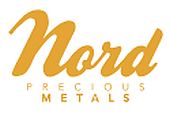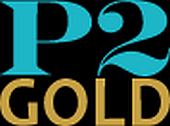
 VANCOUVER – Jim Pettit, President and CEO of Aben Resources Ltd.[ABN-TSX.V; ABNAF-OTCQB; E2L2-Frankfurt] is feeling positive these days – with good reason. Pettit told Canadian Investor that he feels we are at the bottom of a resource cycle that is starting to look up. That is a good place to be for a gold company anticipating another exciting exploration season.
VANCOUVER – Jim Pettit, President and CEO of Aben Resources Ltd.[ABN-TSX.V; ABNAF-OTCQB; E2L2-Frankfurt] is feeling positive these days – with good reason. Pettit told Canadian Investor that he feels we are at the bottom of a resource cycle that is starting to look up. That is a good place to be for a gold company anticipating another exciting exploration season.
Pettit said the mood at PDAC 2019, Canada’s largest Resource conference, was upbeat and generally positive. He said that bigger companies are becoming more bullish and are on the hunt for promising junior exploration plays. “Gold is in a good place,” said Pettit. “I have talked to a lot of gold people, like Eric Sprott. He’s pretty bullish on gold”.
Aben Resources’ recent exploration success at their flagship Forrest Kerr gold project in British Columbia’s busy Golden Triangle and at their Justin gold project in the Yukon has Pettit looking forward to this summer’s explorations programs. Pettit updated Canadian Investor on plans for the 2019 exploration season.
Forrest Kerr – British Columbia
Pettit expects to be on Forrest Kerr property in June. There is not as much snow there as there was last year. “When it warms up it goes really fast”, he said. “We will be in there and probably able to do a geophysical survey in June. Last year we started in the first week of July”.
Aben Resources is starting the exploration season by doing a large helicopter geophysical survey over the entire 2 km by 4 km Boundary Zone (north and south). “That will give us an indication of the deep-seated structures rather than close to surface structures,” said Pettit. The geophysics survey, “will hopefully allow us to do some deeper drilling with a little bit more knowledge,” explained Pettit. “That’s one thing we haven’t done is deep holes”. Previous holes have gone as deep as 200 to 250 metres, but they were drilled in the 45 to 60-degree range so they did not go very deep.
Highlights of Aben’s completed 10,000 metre program include:
•Hole FK18-10, returned four separate high-grade zones within 190 metres downhole (with visible gold from interval 118.0-119.0m) The highest-grade zone consists of 331.0 g/t Au over 1.0m within broad zone averaging 38.7 g/t Au over 10.0m from 114.0-124.0m including 62.4 g/t Au over 6.0m
•Additional high-grade zones in Hole FK18-10 include 22.0 g/t Au, 22.4 g/t Ag over 4.0m; 3.9 g/t Au, 4.0 g/t Ag over 13.0m; and 8.2 g/t Au,1.4 g/t Ag over 6.0m
•Hole FK18-12 returned 5.08 g/t Au over 12.0m (40.0m – 52.0m depth), including 24.25 g/t Au over 2.0m (42.0m – 44.0m depth)
•Hole FK18-13 returned 23.3 g/t Au over 2.0m (106.0m – 108.0m depth)
•Hole FK18-17 returned 3.18 g/t Au over 15.0m (232.0m – 247.0m depth) including 11.02 g/t Au over 2.0m (239.0m – 241.0m depth), as well as 31.40 g/t Au over 1.0m (261.0m – 262.0m depth)
Depending on initial results and how they relate to Geochem and geophysics Pettit said, “We could be doing some 400 or 500 metre in length and be looking at something we didn’t see before.”
Pettit told Canadian Investor, “We are going to head into a big program this year. We are going to start off like last year gunning for 5,000 metres and we will have a flexible program, so if we hit something we really like, we can increase it in a heartbeat. We are going to have a few more guys on the team in the field doing field work, ahead of the drill.” This will free up Cornell McDowell, V.P. of Exploration, so he can focus on analytics.
“We have one drill, but we have three areas we want to get into”, explained Pettit. “We have got three areas of high priority: north of the North Boundary Zone, the South Boundary Zone (with new pads) and (also with new pads), the old Noranda hole which is about 250 metres from our North Boundary discovery.” 2017 drilling there resulted in 38 grams over 10 metres
Last year, due to forest fires, Aben was limited to nine drill pads. This year, Aben has a two-year permit for 40 pads. “It’s over a big area, so it’s a question of, where we are going to put the initial pads” said Pettit. “We are able to move them around which we couldn’t do last year … You are limited with your angles you can achieve if you can’t move the pad.”
Pettit explained, “We want to hit just north of the North Boundary Zone. A couple of holes from the North Boundary Zone reached well to the north. They were shallow and as you got to the end of those two holes, they started hitting mineralization. By the time we got way out to the outer length of the hole, they are far apart from each other. There is something there and we would like to get a little closer in to drill between them…It is a high priority area we want to get to. We’ll put a pad in there and see where that goes to the north and, because you are there, you can turn it around and drill back towards the North Boundary Zone.”
Pettit said, “I think, at the end of the day, if we end up with 10 to 15 thousand metres drilled that’s great”.
Justin Gold Project – Yukon
Plans for the Justin Project this year include RAB (Rotary Air Blast) drilling on the Lost Ace Zone following up on the success of the last two seasons’ highly successful trenching and soil sampling programs there. Pettit explained, “A RAB drill can get from 50 to 70 metres deep. We will get about 20 holes in for a very low cost.” RAB drills are easy on the ground, disturbing the soil minimally and use air at a high pressure blasting and turning at the same time. It is a small, remote-controlled, wide-tracked unit that the geologist can walk behind as it is moved to the next drill site.
There are also plans to explore what Pettit says is a larger, lower grade intrusion related gold system in the Old POW Zone discovered in 2011 and 2012. It has not been drilled since. This summer Aben plans to drill up to six diamond drill holes around the old POW Zone. One of the holes in 2012 returned ~60 metres of 1.19 g/t gold that included 21.0 metres of 2.47g/t gold. “It is pretty common for those type of systems,” said Pettit.
Some highlights from 2108 exploration:
•Trench TR18-001 returned values ranging from trace to an average of 20.8 grams/tonne (g/t) gold (Au) over 4.4 m, including 88.2 g/t gold (Au) over 1.0 m. Visible gold was observed in the sample returning 88.2 g/t gold (Au).
•The 2018 high-grade samples were collected 127 metres from 2017 discovery outcrop and within 20 metres from where a bulk soil sample returned 1,135 visible gold grains in 2017.
“So, we have got two targets and we think they are associated. We think the high-grade evidence at the Lost Ace Project looks orogenic in nature. It is part of the upper formation of the overall formation of the 3 Aces Project that Golden Predator has. It is an older system, but it is uplifted, and it is right beside the big intrusion that we have identified at the POW Zone. It is only a kilometre and a half away. It’s a big intrusion related gold system. It’s basically what many of the big deposits in the Yukon are based on,” explained Pettit.
Canadian Investor asked Pettit what the chances of finding something like Golden Predator’s high-grade bulk sample from which gold was poured and gold coins were made.
“It is a possibility, said Pettit…And if everything goes according to plan it is going to add another month to a month and a half to our drill season. Instead of just a short summer drill season in the Golden Triangle, this gives us more to look at.
There should be a good news flow coming from Aben Resources this summer. Keep an eye out for the first drill results by August.
By Kathrine Moore






















